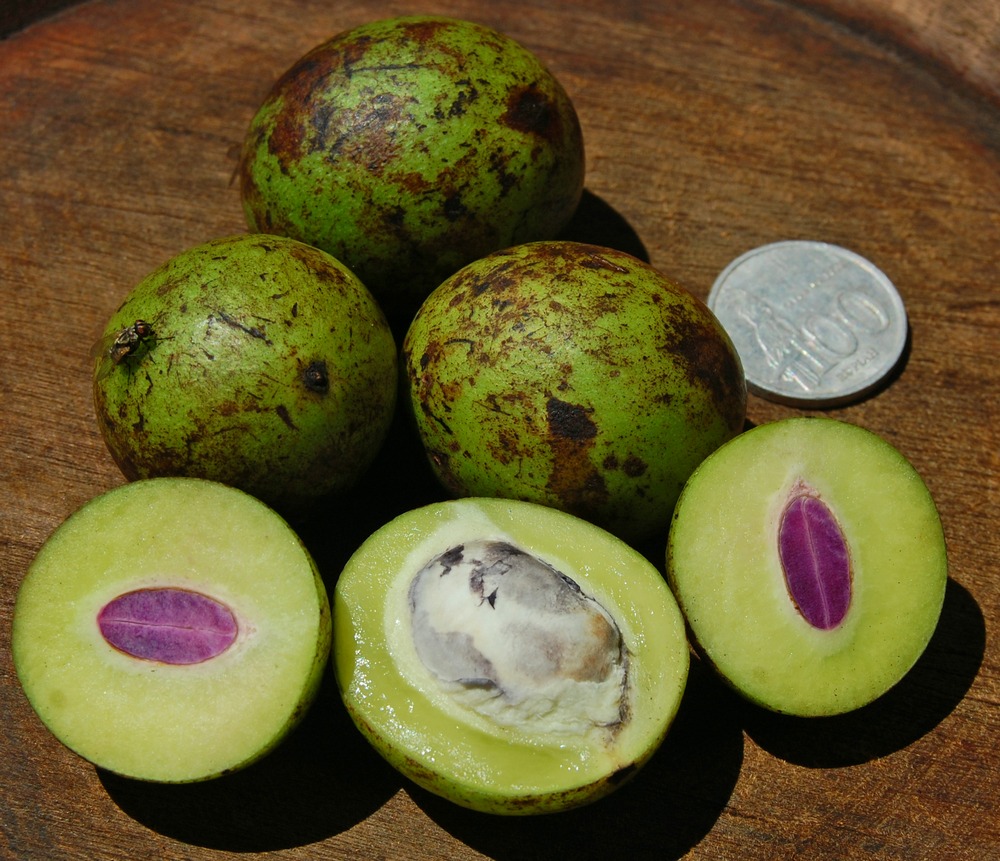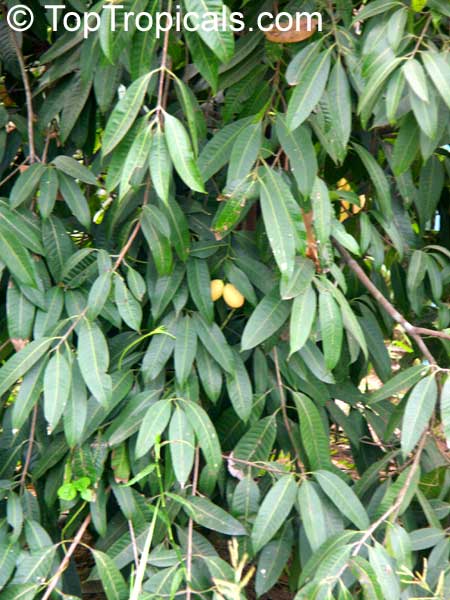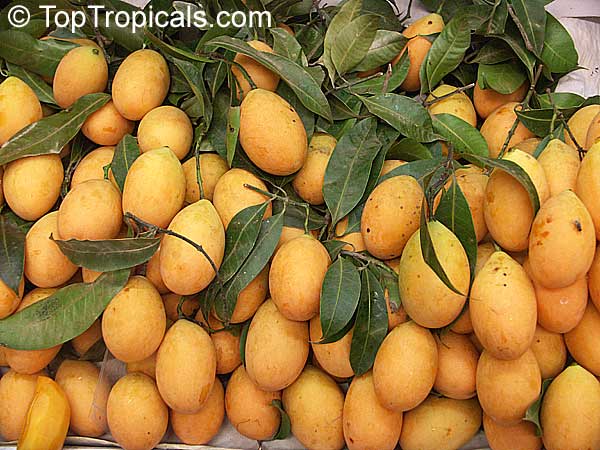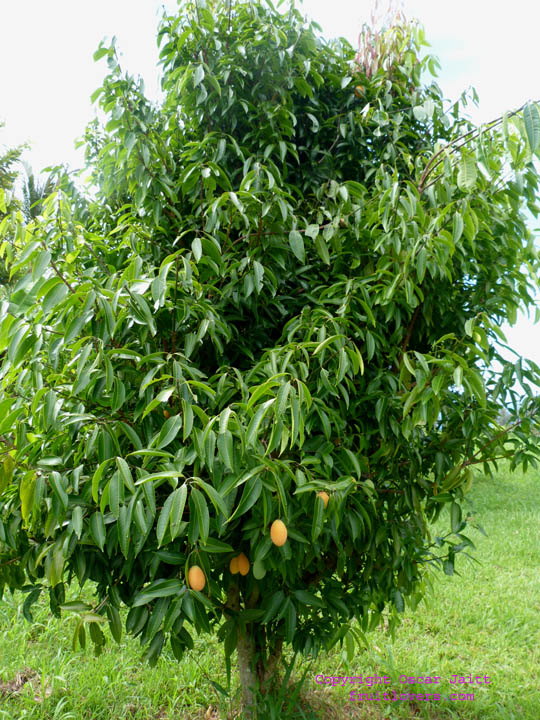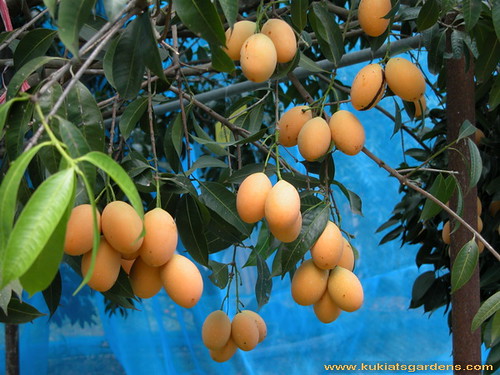Bouea macrophylla
Fruits of Bouea macrophylla
Bouea macrophylla is a flowering plant in the family Anacardiaceae ( Anacardiaceae ) and is related to the mango. It is in Southeast Asia (Malay Peninsula and western Java and Sumatra) and delivers native fruit. There are many common names in the growing areas: in Java, Philippines " Gandaria "; in Malaysia " Kundangan ", " Rembunia ", " Setar "; in Sumatra " Ramania "; in Thailand "ma - praang ", "ma -yong "; and in English " Marian plum ".
- 4.1 Breeding Forms
- 5.1 Notes and references
Description
Appearance, bark and leaf
Bouea macrophylla grows as evergreen tree reaching heights of growth 10 to 27 meters. With a straight trunk and a dense, broad tree crown its appearance is reminiscent of a mango tree. The bark is light brown. The often drooping, angular or flattened branches have a bare bark.
The constantly against arranged on the branches leaves are petiolate 1 to 2.5 cm long. The simple, leathery, glossy leaf blade with a length of usually 14 to 30 ( 11-45 ) cm and a width of usually 5 to 8 ( 4-13 ) cm, lanceolate, elliptic to ovate -oblong with pointed or wedge-shaped Spreitenbasis and pointed sharpened to the top.
Inflorescence and flower
The flowers are borne in pendent, 4-12 cm long, paniculate inflorescence. The relatively small flowers are radial symmetry with a double perianth. The calyx teeth are broadly ovate. The yellowish to cream-colored, early becoming brown petals are oblong to obovate, with a length of 1.5 to 2.5 mm and a width of 1 mm. Usually only one stamen circle is present.
Fruit and seeds
The bald, yellow when ripe to orange drupe is nearly spherical, about plum -shaped with a length of about 7 to 10 cm and a diameter of 2.5 to 5 cm. With a juicy consistency and an acidic to sweet taste and a characteristic slight turpentine odor, it is suitable to be eaten raw. The endosperm is white to pinkish- purple. Each fruit contains a single seed, which is also edible.
Phenology
In Indonesia, the flowering season from June to November and extends the fruits ripen from March to June. In Thailand, the flowering period from November to December and extends the fruits ripen from April to May
Occurrence
The home of Gandaria are the islands of Sumatra and western Java and the Malay Peninsula. The wild occurrences are restricted to tropical humid areas in altitudes up to about 300 meters.
Because of its edible fruit Bouea macrophylla, is grown worldwide in other tropical regions at altitudes up to about 850 meters, including in Thailand.
System
The first description of Bouea macrophylla was made in 1854 by William Griffith in Notulae ad Plantas asiaticas, 4, pp. 420-423, Table 567, Figure 4 synonyms for Bouea macrophylla handle. are: Tropidopetalum javanicum Turcz, Bouea Gandaria Blume ex Miq ...
Use
The Gandaria is often planted in the tropics as a fruit tree and, because of its dense crown, giving shade. The young leaves are also edible and can be prepared as salad.
Cultivated forms
There are some cultivated forms in culture, here is a selection:
- ' Hintalu ': The fruit of this form is very acidic.
- ' Mayong Chid ': The fruits are sweet and have a yellow- orange colored flesh.
- ' Ramania Pipit ': fruits with sweet red flesh.
- ' Ramania Tembaga ': fruits with sweet red flesh.
Swell
- Sheet at AgroForestryTree Database. (Section Description and occurrence)
- Species with potential for commercial development at Under- Utilized tropical fruits of Thailand ... the FAO. (Section description and names)
- Mansfeld 's World Database of Agriculture and Horticultural Crops. ( Name )



